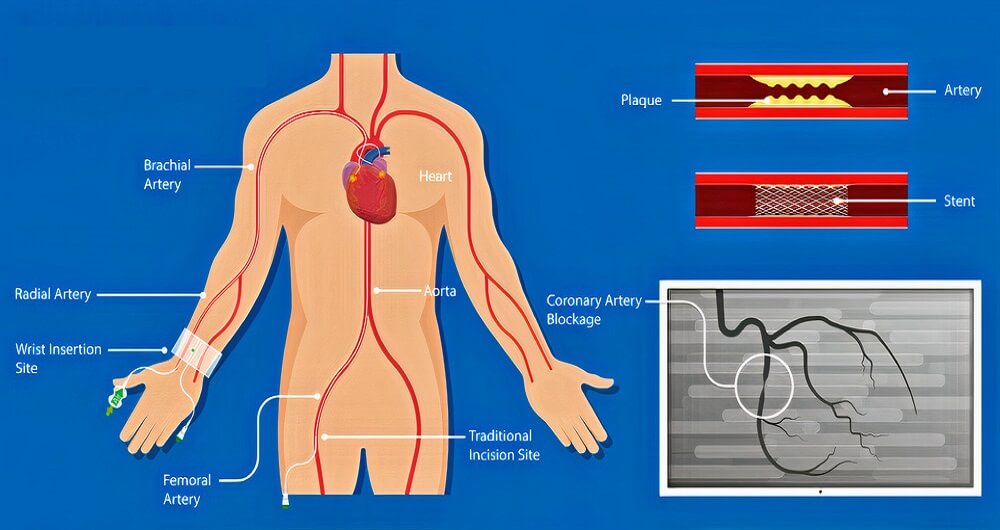2) Invasive measures

Most cases of Prinzmetal’s angina improve on medical therapy alone. Still, in a minority of cases, the frequency of attacks remains high even with maximal medical treatment, and in such cases, more invasive measures become a must. Options for treatment here include revascularization using either percutaneous or surgical methods:
A. Percutaneous intervention:
Percutaneous means through the skin. Such a procedure is usually done by your cardiologist, which involves inserting a “stent” into the lumen of your coronary artery. This is done through a catheter, a tube-like malleable structure inserted into your femoral blood vessels, and goes up your bloodstream to your heart then the coronaries. Such a stent will support your artery’s walls in the event of spasm and prevent their collapse.
B. Bypass surgery:
The above therapy options cover most patients, and surgery for vasospastic angina became rare. It is done on an individual basis and isn’t considered routine. This surgery involves two steps; the first one is creating a “bridge” across the spastic segment of the coronary artery using a blood vessel from the body -as the saphenous veins from the calves-. The same surgery is done in the case of atherosclerotic angina, but here it is less successful, and the spasm may persist. Therefore, the second step is called a “plexectomy” or “denervation,” which cuts some of the nerve supply to the coronary arteries preventing the arteries from going into spasm. You can compare this to an electric motor that keeps producing a noise that won’t just stop, so the best option is to cut off some of the electricity feeding it to slow it down a bit.


